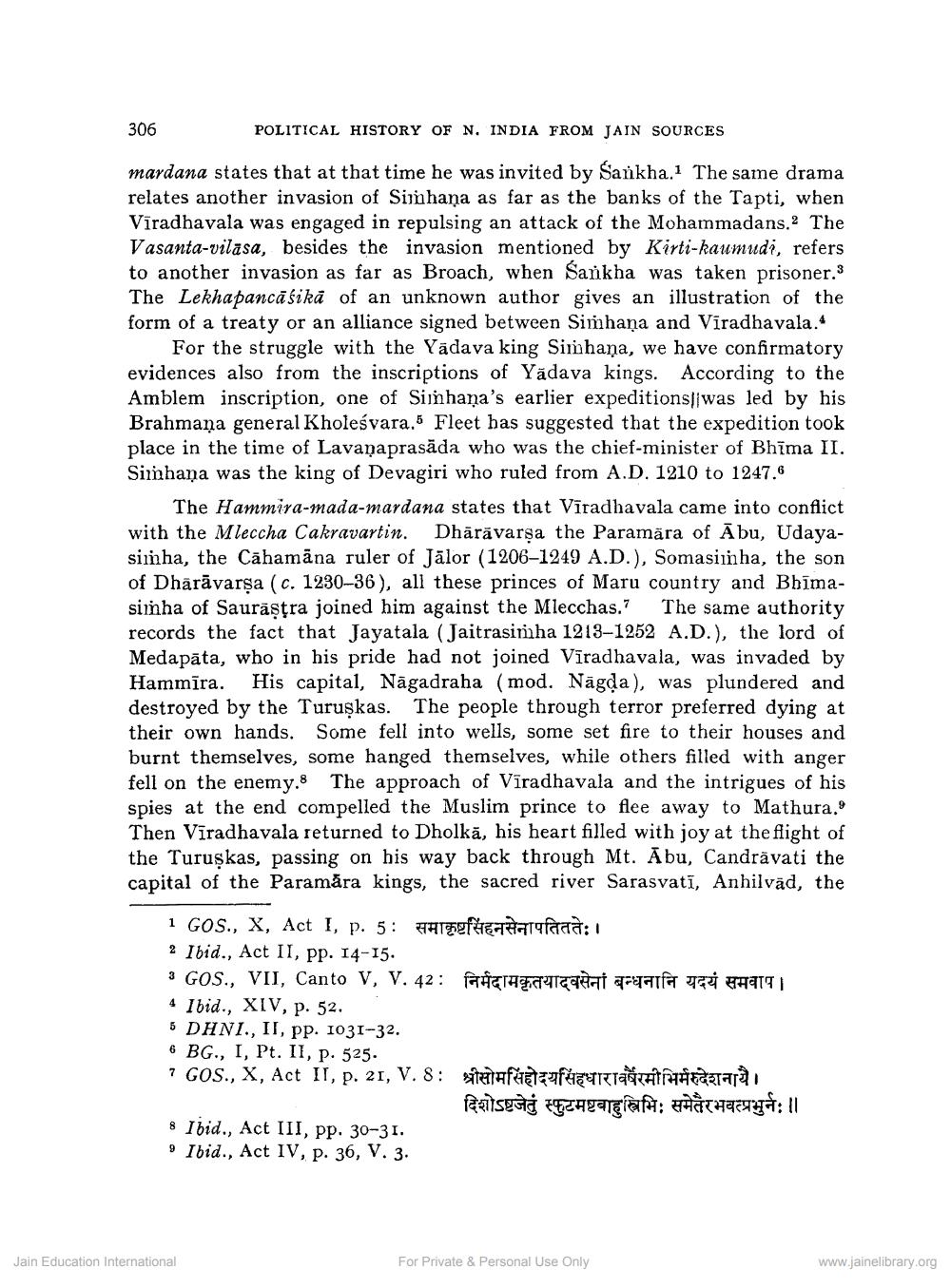________________
306
POLITICAL HISTORY OF N. INDIA FROM JAIN SOURCES
mardana states that at that time he was invited by Sankha.1 The same drama relates another invasion of Simhaņa as far as the banks of the Tapti, when Vīradhavala was engaged in repulsing an attack of the Mohammadans. The Vasanta-vilasa, besides the invasion mentioned by Kirti-kaumudi, refers to another invasion as far as Broach, when Sankha was taken prisoner.3 The Lekhapancāśikā of an unknown author gives an illustration of the form of a treaty or an alliance signed between Simhaņa and Vīradhavala.
For the struggle with the Yādava king Simhaņa, we have confirmatory evidences also from the inscriptions of Yadava kings. According to the Amblem inscription, one of Simhana's earlier expeditions was led by his Brahmana general Kholeśvara.5 Fleet has suggested that the expedition took place in the time of Lavaņaprasāda who was the chief-minister of Bhīma II. Simhana was the king of Devagiri who ruled from A.D. 1210 to 1247.6
The Hammira-mada-mardana states that Vīradhavala came into conflict with the Mleccha Cakravartin. Dhārāvarsa the Paramāra of Abu, Udayasimha, the Cāhamāna ruler of Jālor (1206-1249 A.D.), Somasiinha, the son of Dharāvarsa (c. 1230-36), all these princes of Maru country and Bbīmasimha of Saurāsţra joined him against the Mlecchas. The same authority records the fact that Jayatala (Jaitrasimha 1213-1252 A.D.), the lord of Medapāta, who in his pride had not joined Vīradhavala, was invaded by Hammīra. His capital, Nāgadraha (mod. Nāgda), was plundered and destroyed by the Turuşkas. The people through terror preferred dying at their own hands. Some fell into wells, some set fire to their houses and burnt themselves, some hanged themselves, while others filled with anger fell on the enemy.8 The approach of Vīradhavala and the intrigues of his spies at the end compelled the Muslim prince to flee away to Mathura." Then Vīradhavala returned to Dholkā, his heart filled with joy at the flight of the Turuskas, passing on his way back through Mt. Ābu, Candravati the capital of the Paramāra kings, the sacred river Sarasvatī, Anhilväd, the
1 GOS., X, Act I, p. 5: THOHETTfaaa: 1 2 Ibid., Act II, pp. 14-15. 3 GOS., VII, Canto V, V. 42: PATTATICCATI FIT JE WATT 4 Ibid., XIV, p. 52. 5 DHNI., II, pp. 1031-32. 6 BG., I, Pt. II, p. 525. ? GOS., X, Act II, p. 21, V. 8: AFTER AFHENTERTAITHE Tar
दिशोऽष्टजेतुं स्फुटमष्टबाहुत्रिभिः समेतैरभवत्प्रभुनः।। 8 Ibid., Act III, pp. 30-31. 9 Ibid., Act IV, p. 36, V. 3.
Jain Education International
For Private & Personal Use Only
www.jainelibrary.org




